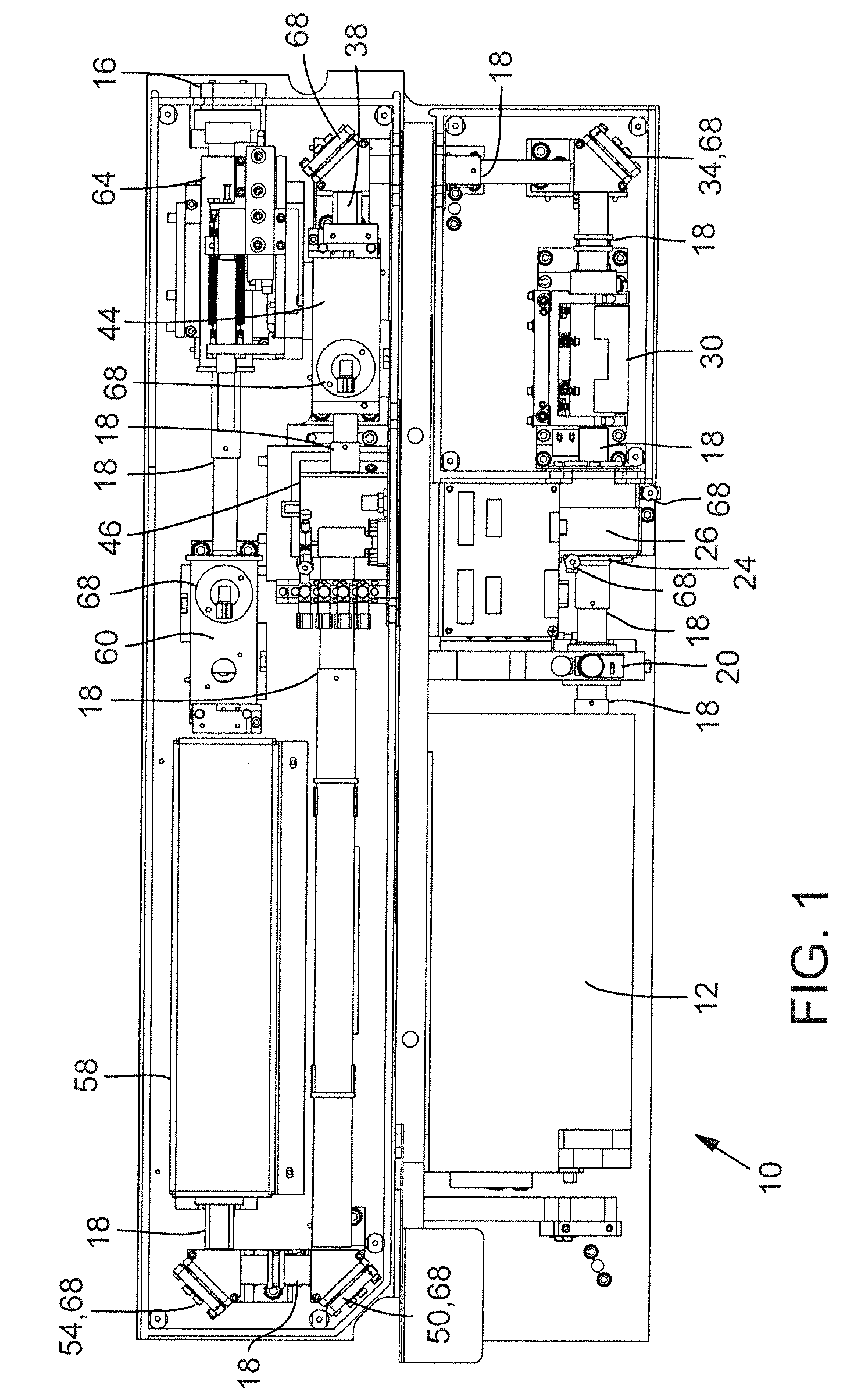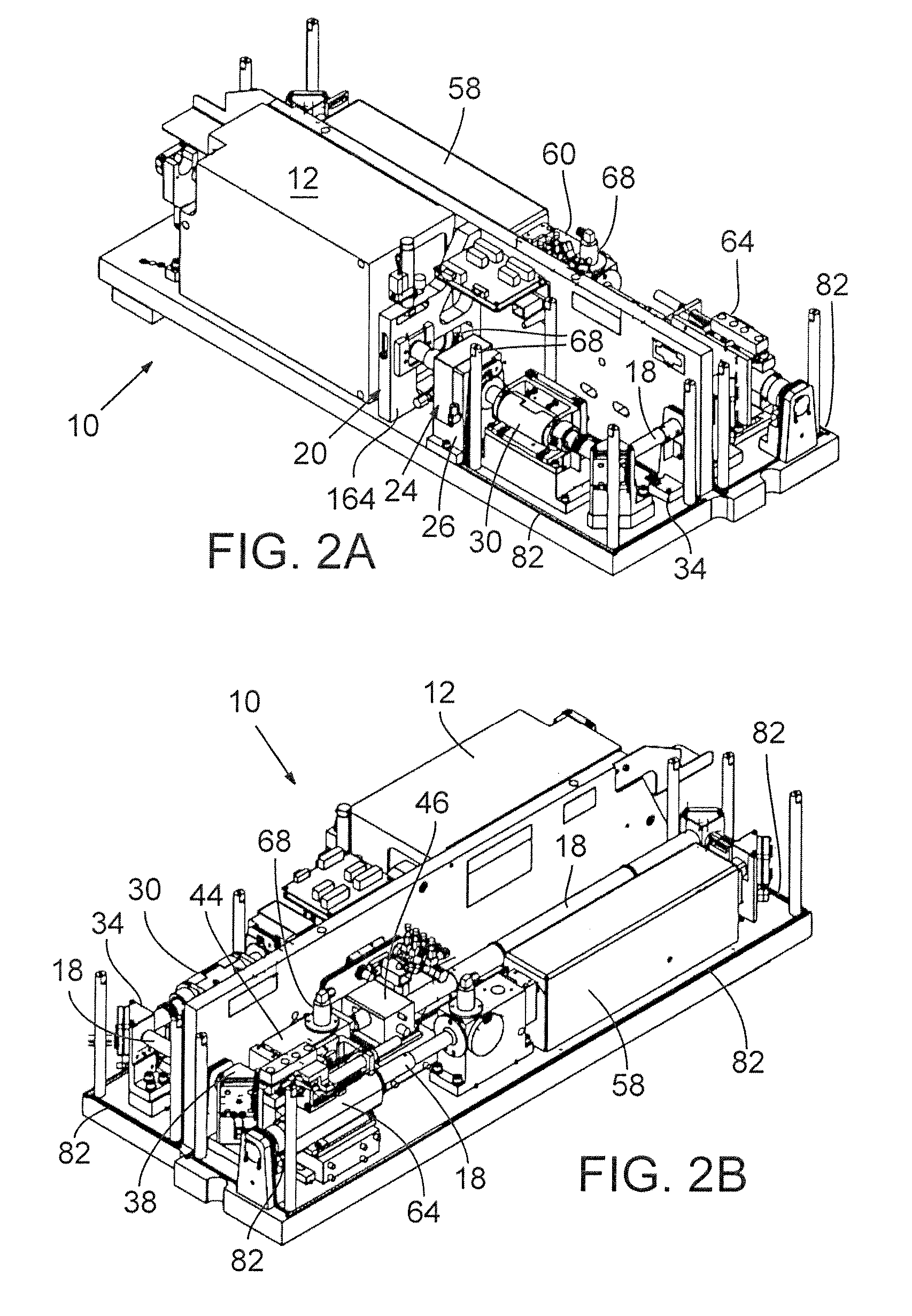Optical component cleanliness and debris management in laser micromachining applications
a technology of optical components and micromachining, applied in the direction of manufacturing tools, transportation and packaging, active medium materials, etc., can solve the problem of the highest probability of damage in the input window, and achieve the effects of reducing the contamination of optical system components, maximizing gas flow, and reducing turbulence-induced beam motion
- Summary
- Abstract
- Description
- Claims
- Application Information
AI Technical Summary
Benefits of technology
Problems solved by technology
Method used
Image
Examples
Embodiment Construction
[0022] The laser optical system in which preferred embodiments of the above-summarized three subsystems are included is shown in FIGS. 1, 2A, and 2B. FIG. 1 is a plan view of a laser optical system 10 with its cover removed, and FIGS. 2A and 2B are isometric views of opposite sides of the laser optical system 10 of FIG. 1, showing where a laser head and a spatial filter, respectively, are located. FIGS. 1, 2A, and 2B show the laser rail assembly without the outer covers that seal the entire laser optical system 10. All of the beam tube sets 18 are visible in these three drawing figures and are specifically identified in FIG. 1.
[0023] With reference to FIGS. 1, 2A, and 2B, the output beam of a laser head 12 (housed within a separate cover) propagates along a beam path in the general shape of an “S” through an exit window 16 of laser optical system 10. The output beam propagates through the interior regions of multiple beam tube sets 18 to and from enclosed optical components positio...
PUM
| Property | Measurement | Unit |
|---|---|---|
| operating wavelength | aaaaa | aaaaa |
| pressure | aaaaa | aaaaa |
| angle | aaaaa | aaaaa |
Abstract
Description
Claims
Application Information
 Login to View More
Login to View More - R&D
- Intellectual Property
- Life Sciences
- Materials
- Tech Scout
- Unparalleled Data Quality
- Higher Quality Content
- 60% Fewer Hallucinations
Browse by: Latest US Patents, China's latest patents, Technical Efficacy Thesaurus, Application Domain, Technology Topic, Popular Technical Reports.
© 2025 PatSnap. All rights reserved.Legal|Privacy policy|Modern Slavery Act Transparency Statement|Sitemap|About US| Contact US: help@patsnap.com



